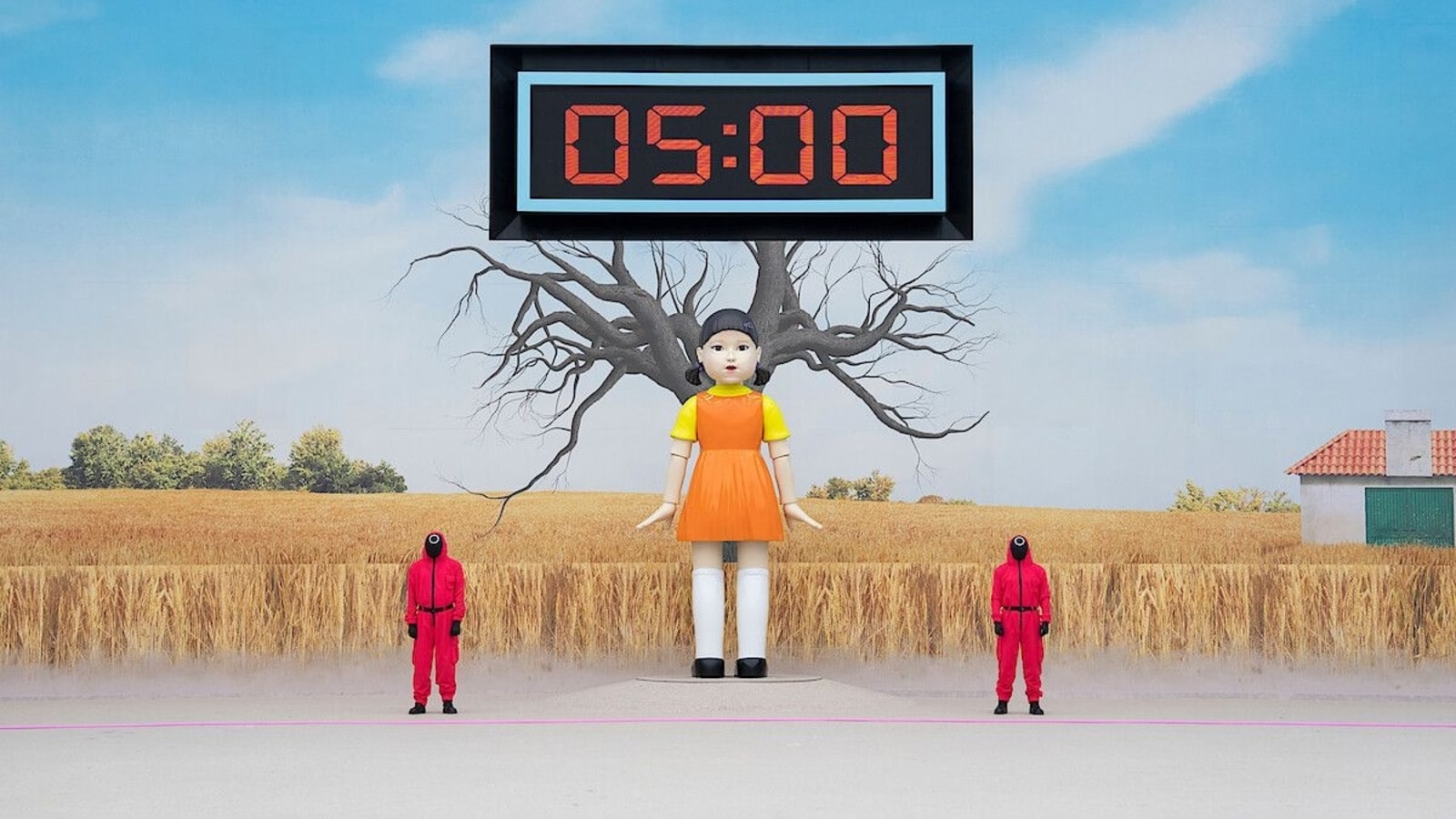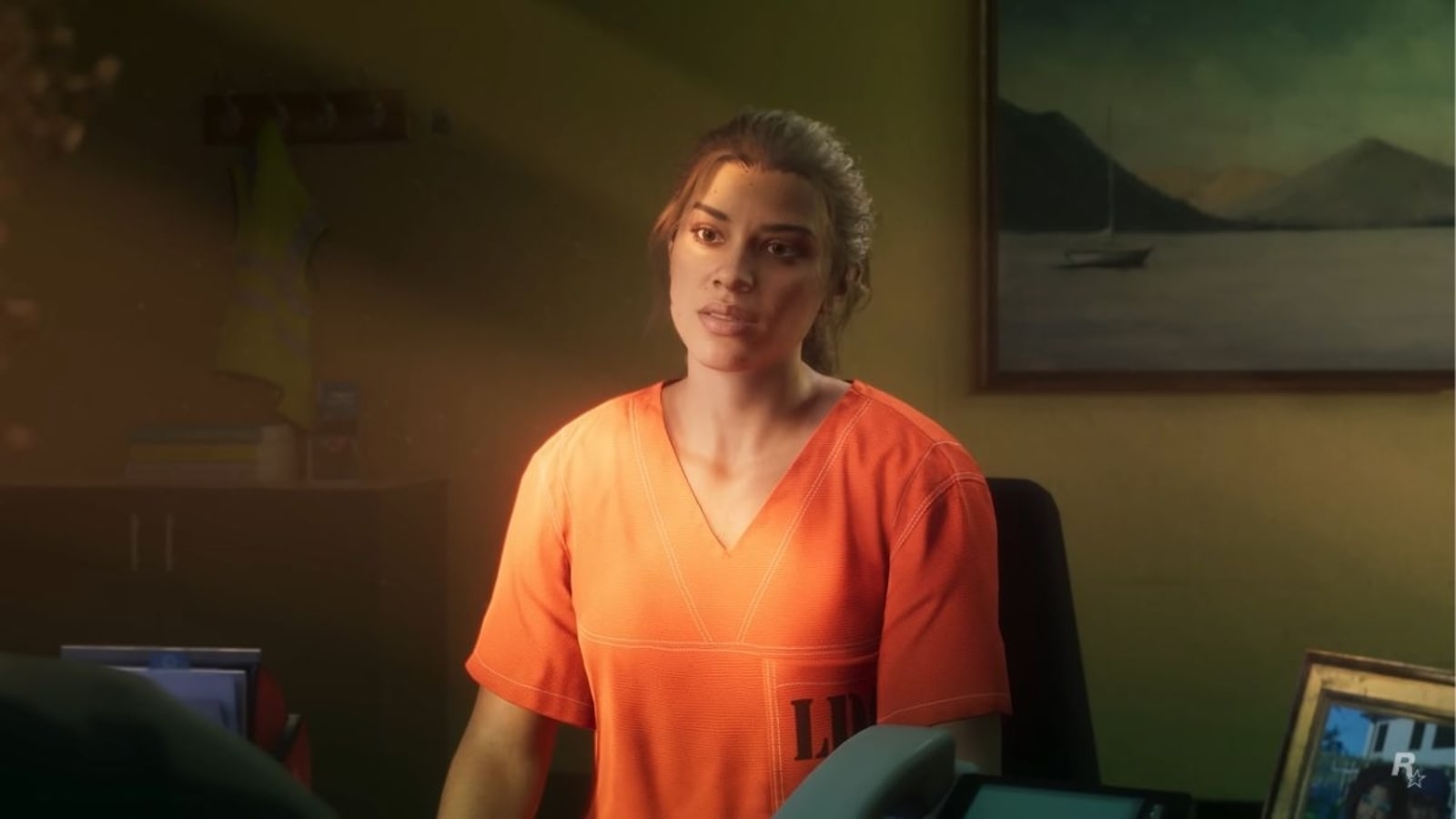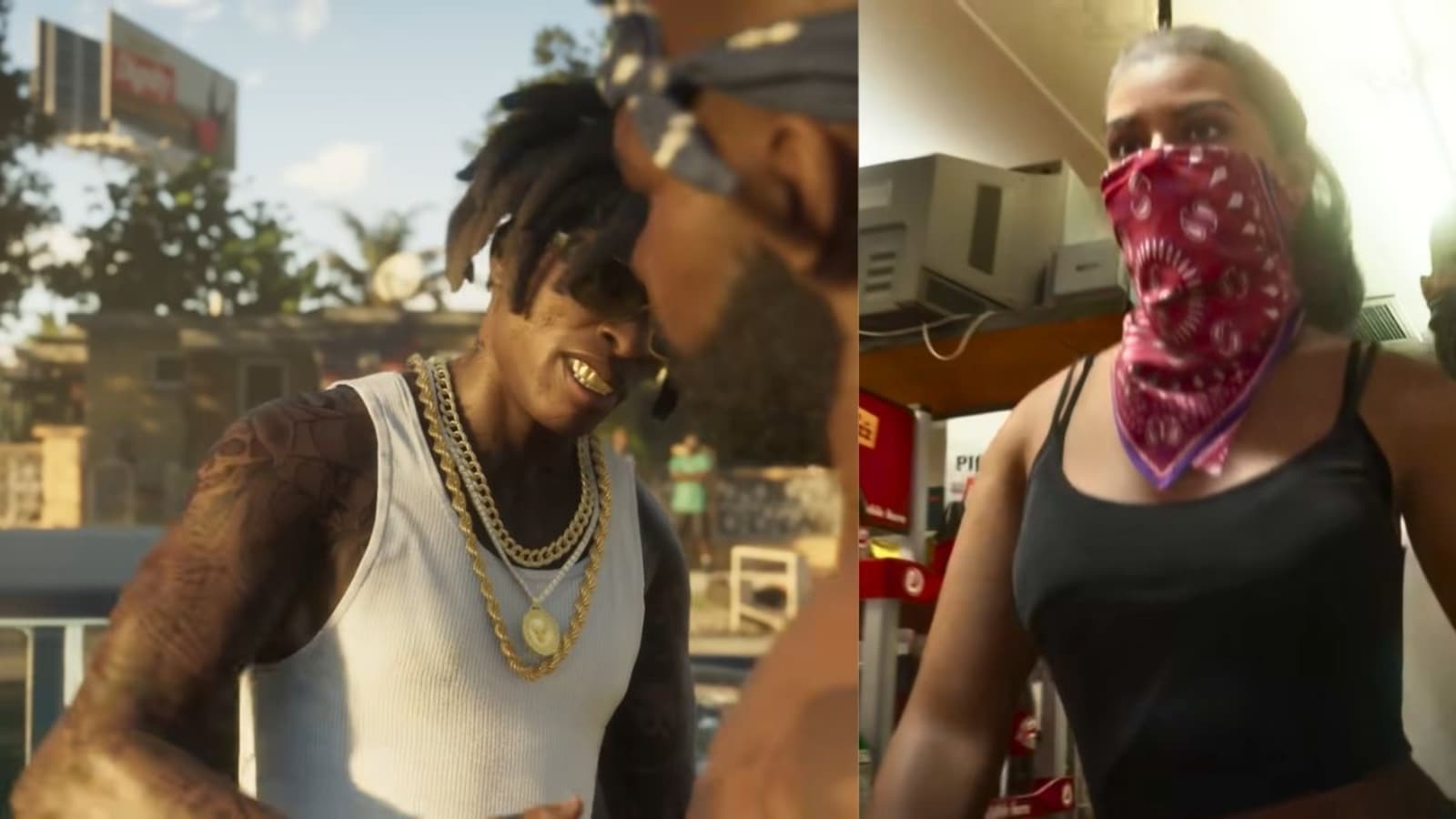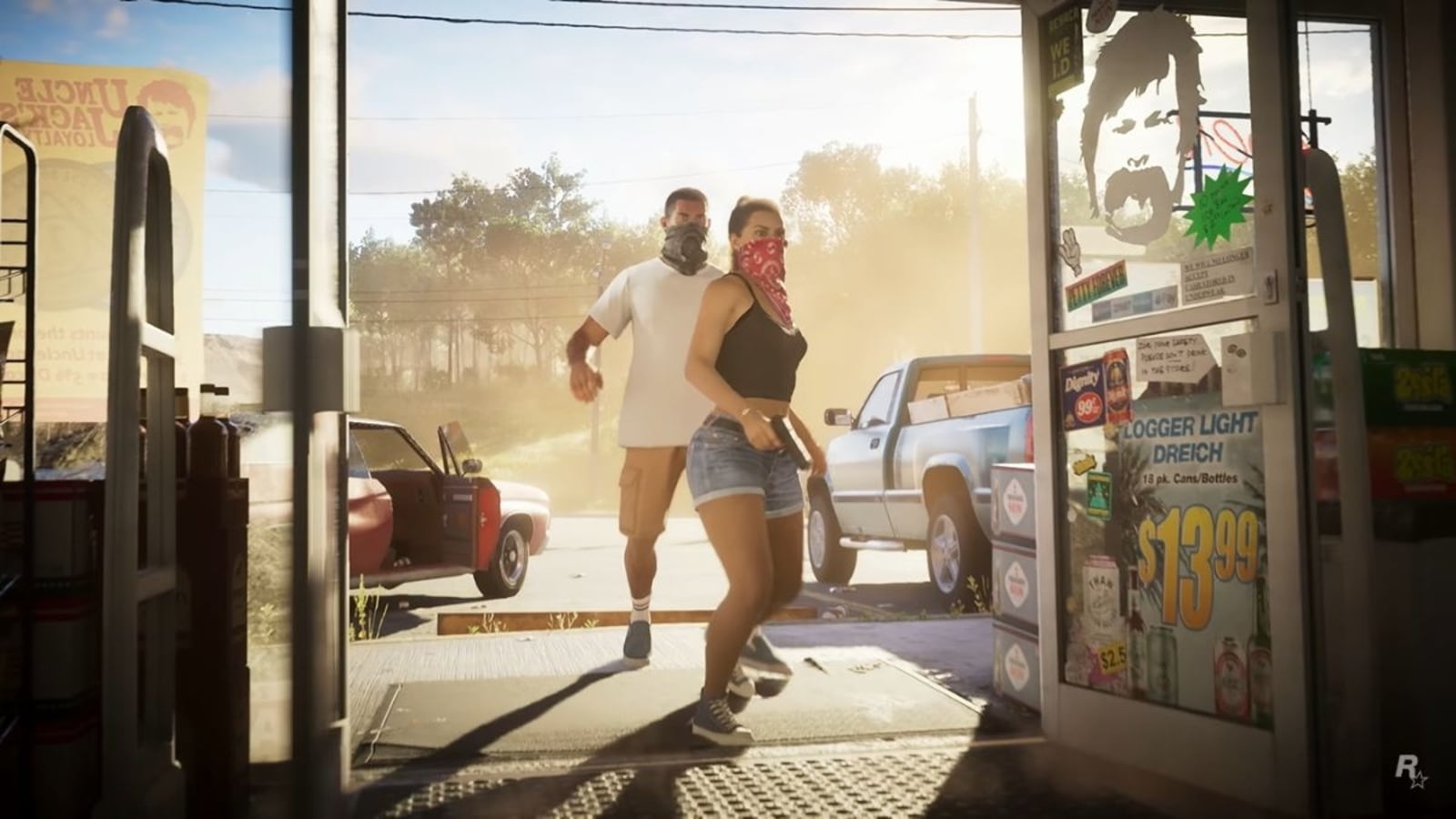Universal’s evil robot movie “M3gan” is one of the first big hits of 2023. But two new indie horror films are generating buzz too, even though they were made for next to nothing and are driven by distorted audio, disorienting cuts and other defiantly experimentalist techniques.
Kyle Edward Ball’s “Skinamarink” is about two children who encounter a sinister entity in their darkened home. (It’s currently in theaters and streaming on Shudder.) The film channels CreepyPasta videos and experimentalists like Takashi Ito, whose 1984 short film “Ghost” looks like “Skinamarink” on uppers. Ball’s film, which had a $15,000 budget, has made more than $1.8 million at the North American box office.
Robbie Banfitch’s “The Outwaters” is about a group of friends who encounter a bloodthirsty force during a trip to the desert. (It opens in theaters on Feb. 9 and will later stream on Screambox.) Also made for about $15,000, it starts as a found footage film but pivots into a sustained, confrontational barrage of blood-soaked fast cuts and panicked sound design. For horror fans this is a love language.
Critics have been mostly positive. Writing in The Times, Jeannette Catsoulis said “Skinamarink” is “as difficult to penetrate as it is to forget.” Early reviews for “The Outwaters” are glowing but sound like police reports, with words like “an assault” and “suffocating.” Again, for horror fans these are come-ons.
Who are these two directors, and why are their experimental movies getting noticed? Instead of interviewing them myself, I asked them to interview each other. I listened as they spoke over video: Ball, 31, was at home in his native Edmonton, Alberta, and Banfitch, 37 and originally from New Brunswick, N.J., was in Los Angeles. Their conversation has been condensed and edited.
The Projectionist Chronicles the Awards Season
The Oscars aren’t until March, but the campaigns have begun. Kyle Buchanan is covering the films, personalities and events along the way.
ROBBIE BANFITCH Kyle, if you were a collage, what would you be made of?
KYLE EDWARD BALL It would be like a 90s high school girl style collage. But also my favorite movies: “2001: A Space Odyssey,” “Black Christmas,” “The Shining,” “The Birds,” “Woman in the Dunes.” I’d put in movies I watch as comfort: the 1931 “Dracula,” “Black Sabbath” by Mario Bava.
OK, so Robbie, what made you want to go into filmmaking?
BANFITCH I knew I wanted to make movies around 7 or 8. What made me want to get into it was “Jaws” and “Jurassic Park,” Steven Spielberg’s films. They exhilarated me.
BALL Why did you want to go into experimental horror territory?
BANFITCH I never thought of “The Outwaters” as experimental as I was making it. The logic of the story — what would be filmed or not in the situation — makes it experimental in parts. But that was never the plan.
All right. Tell me about your influences during high school.
BALL I went to a fairly L.G.B.T.-friendly public school in Edmonton called the Victoria School of the Arts. I also discovered a video store called the Alternative Video Spot that has since closed. I gravitated toward edgier stuff: Stan Brakhage, Maya Deren, John Waters. But David Lynch and Stanley Kubrick are the two guys I want to emulate. They pushed boundaries without being pretentious and still reached an audience. You can do that as long as you give them something worthwhile.
Growing up, did you look up to gay filmmakers?
BANFITCH I don’t know that I did. But I did look up to the character David in “Six Feet Under.” In the beginning, he’s still in the closet, living with his mom. I was watching “Six Feet Under” while closeted, living with my mom and watching the show with her. He came out to his mom and then right after, my mom asked me if I was gay but I said no. But I believe she’d already found my “Queer as Folk” box set under my bunk bed. She knew, but she was letting me take my time.
What’s at the heart of “Skinamarink”?
BALL I have a canned answer that evolved out of doing interviews: I had a YouTube channel where people would comment on things that scared them. But as I kept giving that answer, I realized there are a lot of things that inspired this movie that I’m not even comfortable to say. At the heart of it is pain and sadness and a little bit of anger.
Do you think your movie would have been better or scarier if you had a multimillion-dollar budget?
BANFITCH I don’t think it would have. The whole point was to feel raw and unfinished.
BALL I feel the same. It works because it’s small and contained. Horror is one of those examples where the glossier something is the less scary it is.
Do you like delving into what people say about your film online?
BANFITCH I’m interested to know what people think but I’m happy with the movie as it is. The only thing that annoys me is when people make an assumption that’s not true but state it as fact. For example: This is obviously a rich kid who used his parents’ money. It’s like no, I worked at Greenpeace and the movie was made on a budget after I paid my rent and ate from my nonprofit paycheck.
BALL Both of our movies are polarizing. How do you process hate your movie gets?
BANFITCH I read it and think about it. But it doesn’t bother me.
BALL You’re pretty thick-skinned. I take everything personally.
BANFITCH I’m thin-skinned about plenty of things but not this movie.
BALL The only thing I don’t super take personal are the professional reviews because they plead their case fairly well. Except the one from The New Yorker because it felt like, oh, a poor made a movie. I may have been taking that the wrong way.
Truth be told, the other day I said to my boyfriend, oh, The New Yorker didn’t like it and then I thought, even that’s incredibly privileged. Five months ago I would have been aghast that I was saying, oh, The New York Times liked it but The New Yorker didn’t, like I’m Scorsese or something.

























